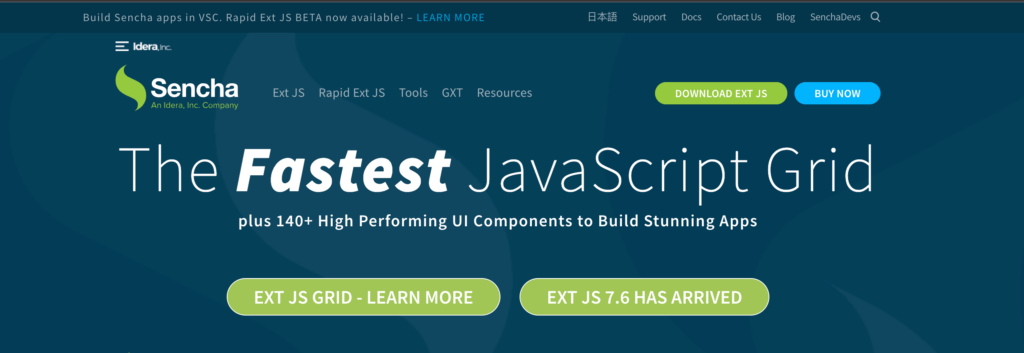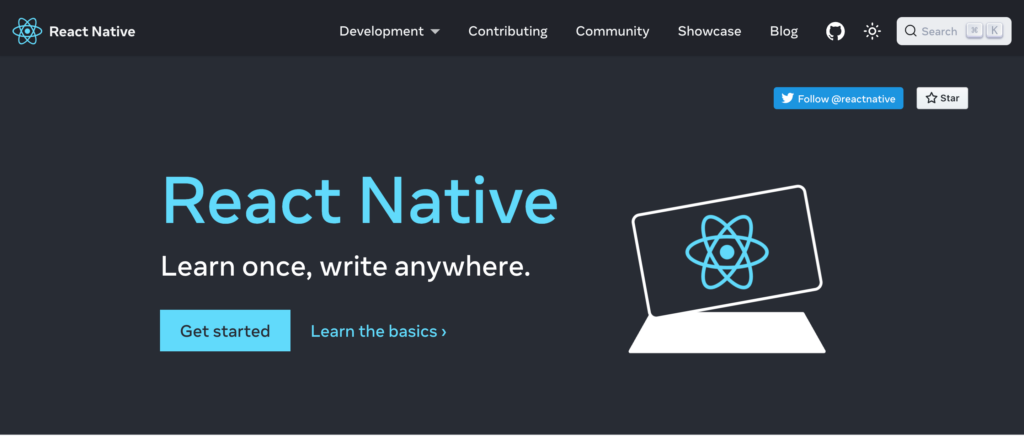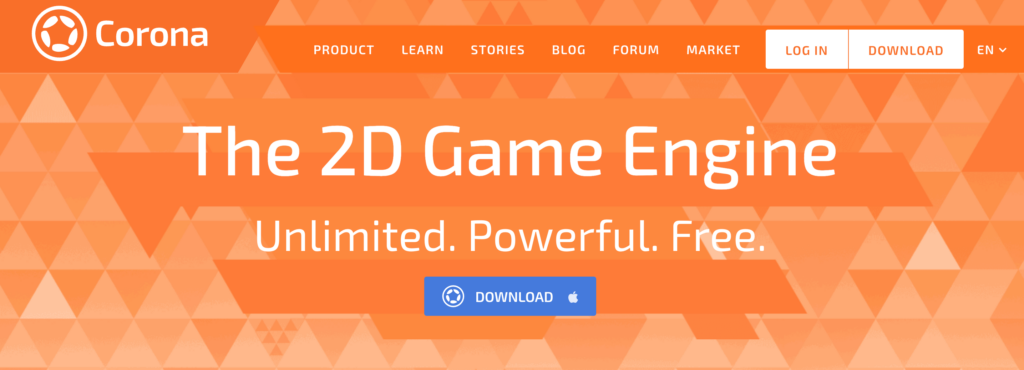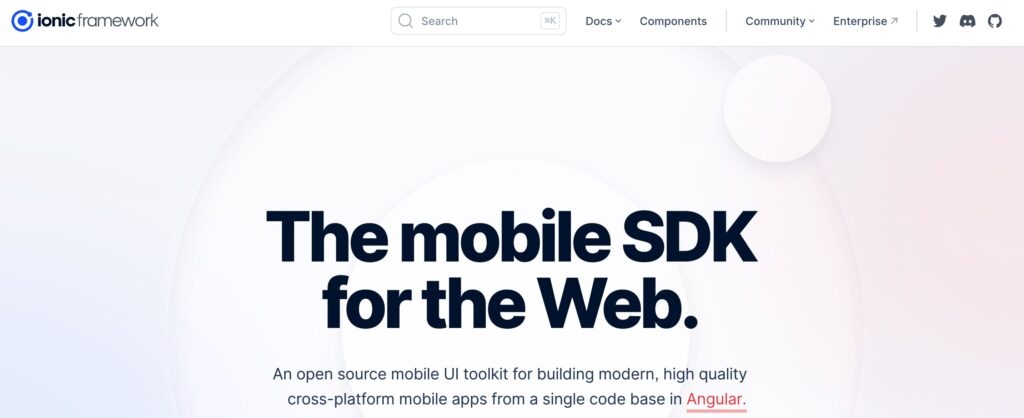In the realm of technology and business, it is evident that expanding one’s user base is crucial for driving revenue growth. In addition, having a robust cross-platform app has become increasingly essential in today’s rapidly advancing technological landscape. The rationale behind this is quite clear: by creating a cross-platform app, you can effectively reach a larger audience while maintaining cost-effectiveness.

The competitive nature of the digital landscape has posed challenges for developers, compelling them to explore new app development solutions that yield optimal results with minimal effort.
The demand for cross-platform app development frameworks has witnessed a remarkable surge. This surge can be attributed to the fact that cross-platform applications possess a wider reach compared to native apps, offering businesses the opportunity to engage with a larger user base, making it a truly distinctive technology.
As the demand continues to rise, a multitude of exceptional cross-platform frameworks have emerged, empowering developers to craft cutting-edge apps that cater to diverse needs.
We have curated a comprehensive list of the best cross-platform mobile app development frameworks that will undoubtedly propel your business growth.
1. Sencha Ext JS (Formerly Sencha Touch): Enterprise App Development

Sencha Ext JS (Sencha Touch) serves as an invaluable asset for the development of expansive business applications. This cross-platform app development framework proves to be an optimal choice, especially for those seeking seamless integration with Cordova and PhoneGap.
One of Sencha Touch’s most remarkable attributes lies in its ability to streamline the development process of complex business apps. Its popularity among app developers stems from its facilitation of the creation of interactive, native-looking themes.
Advantages of Sencha Ext JS:
- Extensive UI Collection: Offering a vast array of more than 50 pre-built and customizable UI widgets, Sencha Ext JS equips developers with an abundant set of visual elements.
- Robust Backend Data Package: Leveraging a powerful backend data package, this framework enables efficient management and manipulation of data, ensuring smooth operations.
- Seamless Native API Integration: With built-in support for Cordova and PhoneGap integration, Sencha Ext JS simplifies the utilization of native APIs and facilitates smooth packaging processes for deployment.
2. React Native: The Shining Star in Cross-Platform Development

When discussing the top cross-platform mobile development frameworks, it is impossible to overlook the prominence of React Native. Esteemed for its versatility, React Native has become a preferred choice for both iOS and Android platforms. Since its inception in 2015, it has fueled remarkable growth within Facebook’s developer community.
Built on JavaScript, React Native delivers a native-like experience across iOS and Android devices. Its foundation in JavaScript empowers developers to create intuitive user interfaces with ease.
Despite its JavaScript foundation, React Native diverges from conventional approaches by eschewing the utilization of HTML technology, WebView, and CSS. Instead, the framework employs CSS-like polyfills and JSX to define its components. Notably, React Native does not rely on a DOM API.
The key advantage of this cross-platform app development framework lies in its seamless amalgamation of the formidable capabilities of ReactJS and JavaScript. Moreover, developers have the flexibility to incorporate elements in Java, Swift, or Objective-C as per their requirements.
Advantages of React Native:
- Unparalleled User Interface: With a steadfast focus on user interface development, React Native empowers developers to construct highly responsive and engaging UI interfaces.
- Vibrant Open-Source Community: Being an open-source cross-platform software, React Native boasts a vibrant community of developers. This thriving community ensures a wealth of resources and support for developers working on their mobile app development projects.
- Code Once, Run Anywhere: React Native’s hallmark characteristic is the ability to code once and run on multiple mobile operating systems, including iOS and Android. This efficiency saves significant development time and effort.
- Device Diversity: React Native enables the design of mobile apps for a wide range of devices, spanning iOS and Android platforms, including Android TV, MacOS, tvOS, and more. Additionally, it extends its reach to the creation of flawless applications for UWP and Windows.
- Extensive Plugin Compatibility: React Native seamlessly integrates with an array of popular third-party plugins, including the widely used Google Maps plugin, expanding its functionality and versatility.
3. PhoneGap: Dominating the Market for Cross-platform App Frameworks

In 2005, PhoneGap was initially developed by Nitobi Software, and after six years, Adobe acquired it, rebranding it as Adobe PhoneGap. Today, PhoneGap, also known as Cordova, stands as the unrivaled leader among cross-platform app development frameworks, boasting the largest market share. Its exceptional utilization of HTML, CSS, and JavaScript has earned it a stellar reputation in the realm of mobile app development.
One of PhoneGap’s standout features is its robust back-end infrastructure, which plays a pivotal role in enhancing its performance and speed. As a result, PhoneGap serves as an excellent solution for creating basic apps without native capabilities. It seamlessly supports all built-in device functionalities, while also empowering the creation of remarkable applications.
Advantages of PhoneGap:
- Embedded Payment Systems: The PhoneGap cross-platform app development framework empowers users to integrate embedded payment systems, such as Google Play and App Store, into their applications.
- Reliable Performance Across Mobile OS: PhoneGap-created apps demonstrate reliable performance across all major mobile operating systems, ensuring a consistent user experience regardless of the platform.
- Flexible Interaction Control: With PhoneGap, developers have the freedom to control app interactions using JavaScript or other frameworks like MooTools and Sencha Touch. This versatility enables the creation of engaging and interactive user experiences.
- Expandable APIs: PhoneGap’s design is highly modular and plugin-friendly, allowing developers to expand the application programming interfaces (APIs) in a seamless and efficient manner, further enhancing the functionality and versatility of their apps.
4. Corona SDK: A Preferred Choice Among Programmers

When it comes to seamless mobile app development across multiple platforms, look no further than Corona SDK. This cross-platform open-source app development framework offers a remarkable solution that enables developers to create flawless mobile games and applications with unmatched efficiency, boasting development speeds up to 10 times faster.
Corona SDK builds upon the strength of Lua, a versatile and lightweight programming language. With Corona SDK, you have the power to build games for various platforms, including iPads, desktop computers, connected TVs, and more.
Advantages of Corona SDK:
- Extensive Plugin Support: Corona SDK comes equipped with a wide range of plugins catering to media, analytics, in-app advertising, and other crucial functions. These plugins enhance the capabilities of your applications, enabling you to deliver rich and engaging user experiences.
- Swift and Powerful: As mentioned earlier, Corona SDK is built on the Lua programming language, which imparts impressive speed and power to the framework. With Corona SDK, developers can swiftly execute code changes and see real-time updates, facilitating a smooth and efficient development process.
- Rapid Responsiveness: The cross-platform nature of Corona SDK ensures that the framework quickly responds to code changes, allowing developers to monitor and adapt their projects in real time. This responsiveness enhances productivity and enables developers to deliver high-quality applications efficiently.
Corona SDK stands as a reliable choice for programmers seeking to create exceptional mobile experiences across a multitude of platforms, thanks to its extensive plugin ecosystem, swift development capabilities, and real-time responsiveness.
5. Ionic: The Epitome of Excellence

When it comes to cross-platform mobile development frameworks, Ionic stands tall as the undisputed leader. Built on AngularJS, this open-source framework has captured the hearts of developers since its inception in 2013, thanks to its exceptional features and capabilities. Ionic’s core components consist of Apache Cordova and AngularJS, forming a robust foundation for creating remarkable applications.
By adhering to Apache Cordova principles, Ionic enables the development of hybrid HTML apps. These applications operate within a customized shell on mobile devices, utilizing WebView for Android and UIWebView for iOS. This approach combines the best of both worlds, providing a seamless user experience and access to device functionalities.
The true strength of Ionic lies not only in its technical prowess but also in its ability to empower developers to craft user-centric features and visually stunning interfaces. The captivating user interfaces built with Ionic not only captivate users but also keep them engaged for extended periods. Such is the level of native-like performance that Ionic is also a preferred choice for Progressive Web App (PWA) development.
Advantages of Ionic:
- Extensive UI Component Library: The Ionic framework offers a vast collection of ready-to-use UI components, allowing developers to quickly create visually appealing and feature-rich interfaces. This library accelerates development and ensures a consistent and polished look across different platforms.
- Familiar Technology Stack: To leverage the power of Ionic, developers need to be proficient in CSS, HTML, Angular, and JavaScript. By utilizing these widely adopted web technologies, developers can leverage their existing skills and knowledge, making the learning curve smoother and development more efficient.
- Native Feature Integration: Ionic provides a rich ecosystem of plugins that seamlessly integrate with native device features. This allows developers to harness the full potential of smartphones, accessing functionalities like camera, GPS, push notifications, and more, enriching the user experience and expanding the capabilities of their applications.
- Mobile-Centric Design: Built on the SAAS UI framework, Ionic is purposefully designed for mobile operating systems. Its components and design patterns prioritize mobile app development, ensuring optimal performance and a native-like feel.
- Customizability and Flexibility: As an open-source front-end framework, Ionic empowers developers to tailor the code structure to suit their specific needs. This flexibility allows for customization, scalability, and the ability to create unique and innovative solutions.
Ionic’s prowess lies in its comprehensive UI component library, leveraging familiar web technologies, seamless integration of native features, mobile-centric design philosophy, and open-source nature, enabling developers to deliver exceptional cross-platform applications.
Wrapping up
In conclusion, React Native, Ext JS, Ionic, and PhoneGap emerge as the leading cross-platform app development frameworks. Undoubtedly, the prominence of multi-platform development is set to endure, given its substantial advantages in terms of time, cost, and convenience. By opting for cross-platform development, businesses can expedite their app creation process, completing projects in half the time compared to native apps, while simultaneously reaching a wide array of platforms. The enduring appeal of cross-platform development lies in its ability to streamline the app development lifecycle, enabling efficient distribution across multiple platforms without compromising quality or performance.
